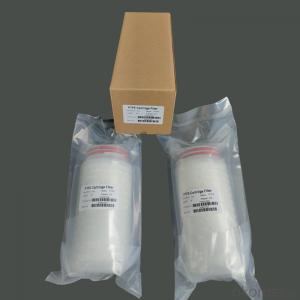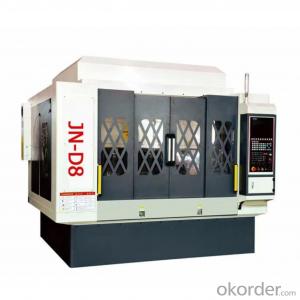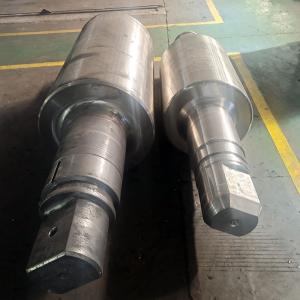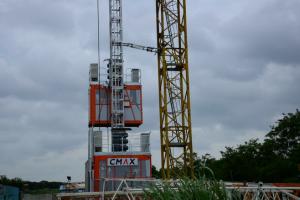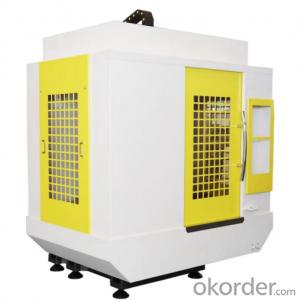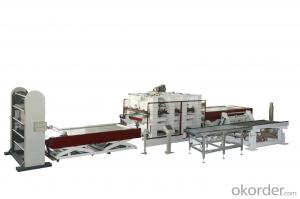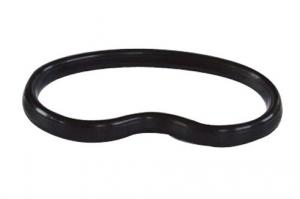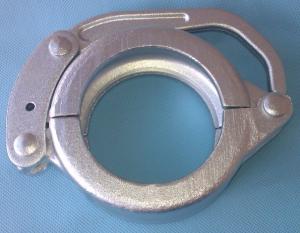Concrete Pump Rubber End Hose with Schwing Coupling
- Loading Port:
- Shanghai
- Payment Terms:
- TT OR LC
- Min Order Qty:
- 1 PCS
- Supply Capability:
- 1000 PCS/month
OKorder Service Pledge
OKorder Financial Service
You Might Also Like
Product Description:
1. Specification
Name | Concrete rubber hose; Delivery hose; End hose; Concrete pump hose; Boom hose |
Size | 2"/2.5"/3"/3.5"/4"/4.5"/5"/6"or according to client’s requirement |
Length | 3M,5 or Any length |
Reinforcement | Steel wire, tire cord or fabric |
Hose End | Galvanized, inner wall harden |
Application | Schwing, Putzmeister, Sany, Zoomlion, etc |
2. Application
1.Applacation:delivery concrete
2.Suitable for the various :Schwing, CIFA,PM, Zoomlion ,SANY and so on.
3. Package
Put into containers.
FAQ:
Q1: Why buy Materials & Equipment from OKorder.com?
A1: All products have its ISO certifications, adheres to the highest standards and a commitment to supply chain safety and customer satisfaction.
Q2: How do we guarantee the quality of our products?
A2: We have established an advanced quality management system which conducts strict quality tests at every step, from raw materials to the final product. At the same time, we provide extensive follow-up service assurances as required.
Q3: How soon can we receive the product after purchase?
A3: Within three days of placing an order, we will begin production. The specific shipping date is dependent upon international and government factors, but is typically 10 to 30 workdays.
Q4: If we can produce Concrete Pump Rubber End Hose with Schwing Coupling according to customers request?
A4: Yes, we can produce Concrete Pump Rubber End Hose with Schwing Coupling according to the difference country situations to make it suitable to the market and customers. We have very professional technical team to make the design.
Q5: How to make a quick resolution for after service?
A5: We have overseas branches all-around of world, If needed, the seller shall dispatch 2 engineers to the buyer's site for supervision of training. The buyer shall make available of necessary facilities &skilled personnel at site for training.
Image:

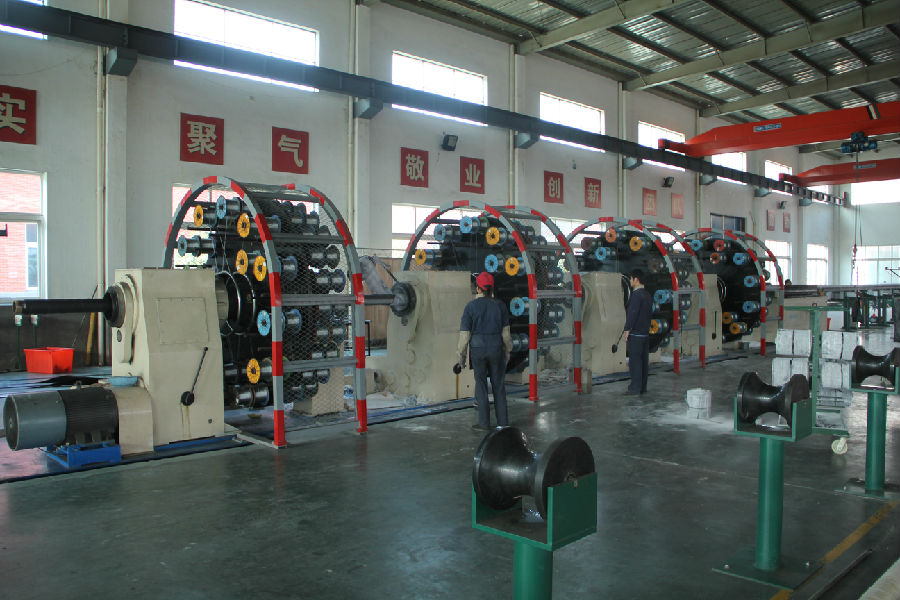
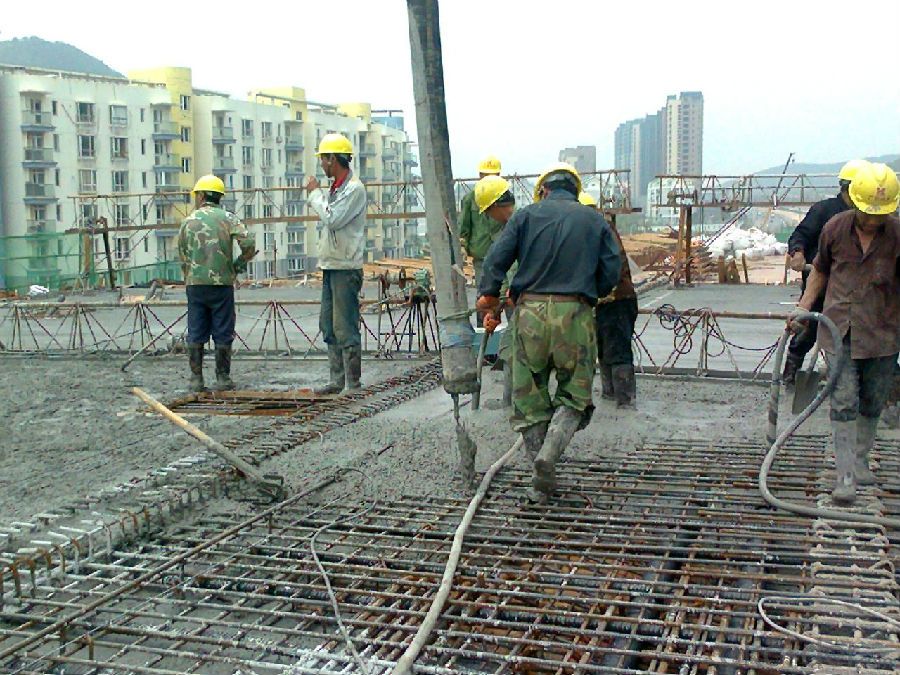
- Q:How often should concrete pump pressure gauges be inspected and replaced?
- Concrete pump pressure gauges should be inspected and replaced on a regular basis, ideally every six months or as recommended by the manufacturer. Regular inspections help ensure accurate pressure readings and prevent potential accidents or malfunctions due to faulty gauges.
- Q:What is the purpose of a concrete pump hopper grate?
- The purpose of a concrete pump hopper grate is to filter out any large debris or aggregates from the concrete mixture as it is being pumped into the hopper. It helps to ensure a smooth and consistent flow of concrete, preventing any blockages or clogs in the pump system.
- Q:How can a damaged concrete pump piston affect the pumping efficiency?
- The pumping efficiency can be significantly affected in various ways by a piston that is damaged. To begin with, reduced pumping capacity can result from decreased power and force exerted by the pump due to a damaged piston. The piston's responsibility is to generate the necessary pressure for pushing the concrete mixture through the pumping system. If it is damaged, it may fail to generate adequate pressure, leading to slower and less efficient pumping. In addition, leaks can occur within the pump system due to a damaged piston. The piston plays a critical role in sealing the concrete and preventing it from leaking back into the hopper. If it is damaged or worn out, a tight seal may not be created, resulting in leakage. This not only leads to material loss but also reduces pumping efficiency as the pump has to compensate for the loss by working harder. Moreover, blockages and clogs can be caused by a damaged piston in the pumping system. The movement of the piston creates suction, which pulls the concrete mixture into the pump. If the piston is damaged, it may not create sufficient suction, causing the mixture to flow unevenly or get stuck in the system. This can cause delays and interruptions in the pumping process, ultimately reducing overall efficiency. In conclusion, the pumping efficiency can be negatively impacted by a damaged concrete pump piston through reduced power and force, leaks, and blockages. It is crucial to regularly maintain and promptly repair or replace damaged pistons to ensure optimal pumping performance and efficiency.
- Q:How can one identify the need for replacement of concrete pump spare parts?
- One can identify the need for replacement of concrete pump spare parts by observing certain signs and conducting regular maintenance checks. Firstly, it is important to monitor the performance of the concrete pump. If there is a decrease in efficiency or a significant drop in the output of the pump, it could indicate the need for replacement parts. This could be due to worn-out components that are affecting the pump's ability to deliver concrete effectively. Another sign to look for is abnormal noise coming from the pump. Unusual or excessive noise can indicate problems with the moving parts, such as bearings or seals, which may need to be replaced. Inspecting the wear and tear of the spare parts is also crucial. Components such as hoses, pipes, and seals can deteriorate over time due to the abrasive nature of concrete. If there are visible signs of wear, such as cracks, leaks, or bulges, it is likely that these parts need to be replaced. Regular maintenance checks are essential in identifying the need for replacement parts. This can involve checking the condition of key components, such as the piston, cylinder, and valves, and ensuring they are clean, properly lubricated, and functioning correctly. Any signs of damage, corrosion, or excessive wear should be addressed promptly to prevent further damage to the pump and the need for more extensive repairs. In summary, by closely monitoring the performance of the concrete pump, listening for abnormal noise, inspecting for wear and tear, and conducting regular maintenance checks, one can effectively identify the need for replacement of concrete pump spare parts. Timely replacement of these parts can help maintain the pump's efficiency and prolong its lifespan.
- Q:Are there any specific guidelines for the selection and installation of hydraulic components in concrete pump spare parts?
- Concrete pump spare parts have specific guidelines for the selection and installation of hydraulic components. When choosing these components, it is important to consider factors like the maximum operating pressure, flow rate, and compatibility with the existing hydraulic system. First and foremost, it is crucial to ensure that the selected hydraulic components can handle the maximum operating pressure of the concrete pump. This includes components such as hydraulic cylinders, valves, and pumps. To ensure their durability and longevity, it is advisable to choose components with a higher pressure rating than that of the concrete pump's operating pressure. Additionally, the flow rate of the hydraulic components must match the requirements of the concrete pump system. Hydraulic pumps and valves need to provide sufficient flow to effectively operate the concrete pump. Factors such as the size of the concrete pump, desired output capacity, and specific pumping requirements should be taken into consideration. Furthermore, compatibility with the existing hydraulic system is vital for the smooth operation of the concrete pump. It is important to select hydraulic components that are compatible with the system in terms of fittings, connections, and overall design. Seeking guidance from the manufacturer's guidelines or professional advice is recommended when selecting and installing hydraulic components in concrete pump spare parts. Moreover, proper installation is essential to ensure optimal performance and safety of the hydraulic components. Following the manufacturer's installation instructions and guidelines is highly recommended. The installation process should include proper alignment, secure mounting, and appropriate sealing of the components to prevent any leaks or failures. In conclusion, there are specific guidelines for selecting and installing hydraulic components in concrete pump spare parts. Considering factors like maximum operating pressure, flow rate, compatibility, and following proper installation procedures can help ensure the efficient and safe operation of the concrete pump system.
- Q:Can I get spare parts for both single-cylinder and multi-cylinder concrete pumps?
- Yes, you can get spare parts for both single-cylinder and multi-cylinder concrete pumps. Many manufacturers and suppliers offer spare parts for different types of concrete pumps, including both single-cylinder and multi-cylinder models. These spare parts can include components such as hydraulic cylinders, pistons, seals, valves, hoses, and other essential parts that may need replacement due to wear and tear or damage. It is essential to reach out to the specific manufacturer or supplier of your concrete pump to inquire about the availability and compatibility of spare parts for your particular model.
- Q:What is the purpose of a concrete pump piston?
- The concrete pump piston serves to apply the essential pressure needed to propel the concrete mixture from the hopper and into the delivery pipeline. Its main responsibility is to generate the force necessary to propel the concrete throughout the system, effectively transporting it to the desired location. This is accomplished through the reciprocating movement of the piston, which creates suction on one side and pressure on the other, allowing the concrete to advance. In summary, the concrete pump piston plays a vital role in enabling the smooth and uninterrupted flow of concrete, making it an indispensable element in construction endeavors that demand accurate and timely concrete placement.
- Q:Can concrete pump spare parts be coated with corrosion inhibitors for long-term storage?
- Yes, concrete pump spare parts can be coated with corrosion inhibitors for long-term storage. Coating the parts with corrosion inhibitors helps protect them from rust and other forms of corrosion, ensuring their longevity and effectiveness when they are eventually used.
- Q:How does a hopper agitator motor ensure consistent concrete mixing?
- Consistent concrete mixing is guaranteed with the use of a hopper agitator motor, which is responsible for providing the required agitation and movement within the hopper. By rotating and moving the agitator blades, the motor effectively mixes the concrete ingredients. The main purpose of the hopper agitator motor is to avoid the settling or separation of the concrete during the mixing process. Through its rotation, a swirling motion is generated inside the hopper, ensuring even distribution and thorough blending of all the ingredients. This prevents any formation of clumps or irregularities in the final concrete mixture. Moreover, the motor also aids in breaking up any lumps or clusters that may have formed within the hopper. This action further enhances the uniformity of the mixture, ensuring proper blending of components such as cement, aggregates, water, and additives. Furthermore, the continuous movement of the agitator blades helps in maintaining the desired consistency and homogeneity of the concrete mix. It prevents heavier particles from settling at the bottom of the hopper, ensuring consistent mixture throughout the entire mixing process. In conclusion, the hopper agitator motor is of utmost importance in achieving consistent concrete mixing. Its role includes providing necessary agitation, preventing segregation, breaking up lumps, and maintaining uniformity. The motor's rotational motion and well-designed agitator blades contribute to well-mixed and homogeneous concrete, which is crucial for durable and high-quality concrete structures.
- Q:How do I properly maintain and replace hydraulic pumps in concrete pump spare parts?
- To ensure the smooth functioning and long life of your equipment, it is crucial to properly maintain and replace hydraulic pumps in concrete pump spare parts. Here are some steps that can assist you in this process: 1. Conduct Regular Inspections: Before and after each use, visually inspect the hydraulic pump to detect any signs of wear, leaks, or damage. Additionally, check for loose bolts, damaged seals, or excessive noise during operation. 2. Adhere to Manufacturer's Guidelines: Consult the manufacturer's guidelines and recommendations regarding the maintenance and replacement of hydraulic pumps. They will provide specific instructions concerning the frequency of maintenance, lubrication, and replacement intervals. 3. Ensure Proper Lubrication: Smooth operation of hydraulic pumps requires proper lubrication. Regularly check the oil levels and refill if necessary. Utilize the recommended oil or hydraulic fluid as specified by the manufacturer. Adhere to the guidelines regarding the frequency of oil changes. 4. Maintain Regular Cleaning: Keep the hydraulic pump and its components free from debris, dust, and dirt. Employ a clean cloth or compressed air to eliminate any accumulated contaminants. This practice will help prevent damage and minimize the likelihood of clogs or blockages. 5. Replace Worn Parts: Over time, certain components of the hydraulic pump may wear out and necessitate replacement. Maintain a stock of spare parts, including seals, gaskets, and filters, to promptly replace any worn or damaged components. 6. Seek Professional Assistance: If you are uncertain about any aspect of maintaining or replacing hydraulic pumps, it is advisable to consult a professional technician or the manufacturer. They possess the expertise and knowledge to guide you through the process and ensure the best maintenance and replacement practices. Remember, regular maintenance and timely replacement of hydraulic pumps in concrete pump spare parts will not only prolong the lifespan of your equipment but also ensure safe and efficient operation on construction sites.
1. Manufacturer Overview |
|
|---|---|
| Location | |
| Year Established | |
| Annual Output Value | |
| Main Markets | |
| Company Certifications | |
2. Manufacturer Certificates |
|
|---|---|
| a) Certification Name | |
| Range | |
| Reference | |
| Validity Period | |
3. Manufacturer Capability |
|
|---|---|
| a)Trade Capacity | |
| Nearest Port | |
| Export Percentage | |
| No.of Employees in Trade Department | |
| Language Spoken: | |
| b)Factory Information | |
| Factory Size: | |
| No. of Production Lines | |
| Contract Manufacturing | |
| Product Price Range | |
Send your message to us
Concrete Pump Rubber End Hose with Schwing Coupling
- Loading Port:
- Shanghai
- Payment Terms:
- TT OR LC
- Min Order Qty:
- 1 PCS
- Supply Capability:
- 1000 PCS/month
OKorder Service Pledge
OKorder Financial Service
Similar products
New products
Hot products
Related keywords

















